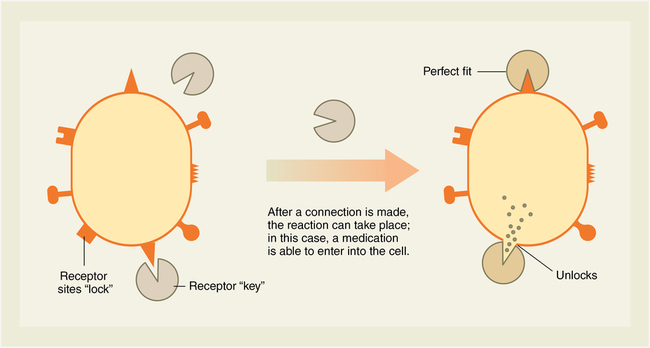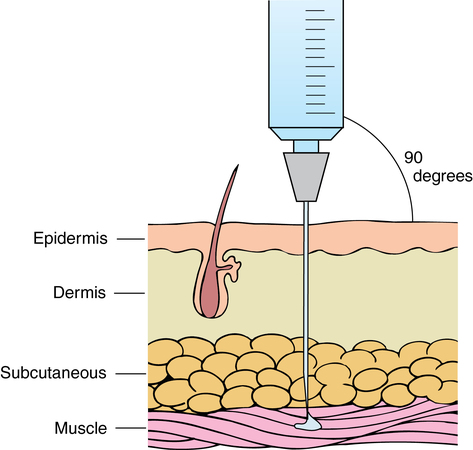1. Discuss the four processes of pharmacokinetics that parenteral medications go through. 2. Discuss factors that must be considered when determining the correct dosages for parenteral medications, including why pediatric and elderly patients require special dosing considerations. 3. Name at least two references to use to find the storage requirements for a parenteral medication. Movement of a drug into the circulatory system Drug effects that are unexpected and unwanted and are usually reported in only a few patients Movement of a drug through the body into tissues, membranes, and then organs Removal of a drug from the body Changing of the chemical structure of a drug by the body Drug effects that are predictable, widely reported, and can be found in literature Manufacturers create medications with the ability to release and be distributed over a certain period of time. The process that drugs go through in the body is known as pharmacokinetics and includes four different steps. The first step is known as absorption. This process is the movement of the drug through barriers, such as the digestive tract, into the bloodstream where it can be distributed to the target organs or tissues. With parenteral medications, there are no barriers to slow the movement of drugs into the bloodstream because they bypass these digestive processes. This allows the second step or distribution of drugs to occur. This distribution process is what allows the drug to reach its target cells and exert its action. Target cells have special places where drugs go to allow a specific action to take place. These places are known as receptor sites. This is sometimes referred to as a “lock and key” mechanism, which describes the interactions of the drug at the receptor sites on the target cell (Figure 3-1). If a drug is given intravenously, it bypasses the gastrointestinal (GI) system and goes directly to the bloodstream where it is distributed throughout the body. When a drug is given via an intramuscular (IM) injection, it is absorbed through tissue membranes and then enters the bloodstream (Figure 3-2). Low weight in neonates and infants usually causes a reduction in the dosage of medication, but there are many other factors to consider when dosing medication for these patients (Box 3-1). Neonates and infants have smaller skeletal structures, and this can affect the absorption of medication just as much (Figure 3-3). Since there is limited physical activity in these patients, there is a decrease in blood flow to the muscles. This causes slower absorption of the medication and increases the risk of muscle and nerve damage with any IM injection, since the medication is not absorbed into the bloodstream as quickly as with an adult. Several factors, such as blood flow and metabolism, influence how much of a drug reaches its organ or area of the body. Various organs, such as the liver and kidneys, have the largest blood supply.
Medications used in intravenous preparations
Introduction
Pharmacokinetics for parenteral medications


Special dosing considerations for parenteral medications
Age
![]()
Stay updated, free articles. Join our Telegram channel

Full access? Get Clinical Tree


Medications used in intravenous preparations

